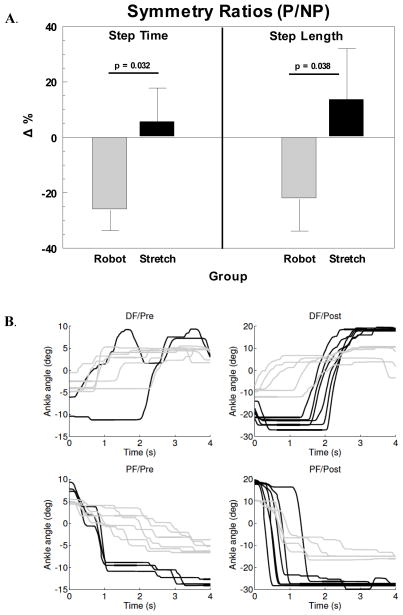Figure 2.
Effect of intervention on gait function and ankle targeting: A. Percent change for step time and step length symmetry measured as ratios of paretic-to-nonparetic sides. Decreases in percent change (Δ%) reflect shifts toward greater interlimb symmetry. P = paretic; NP = nonparetic; B. Examples of movement traces from an exemplar patient in the robot (solid black) and the stretching (solid gray) groups without anklebot assistance. Top panels show the changes in dorsiflexion (DF) movement smoothness before (left-Pre) and after (right-Post) the respective interventions. Lower panels show similar changes in plantarflexion (PF). Note that the initial ankle positions (at 0 sec) are influenced by the location of the preceding target. The movement traces also illustrate time-to-target i.e., velocity differences (steeper slope = faster movements) and improved ranges of motion for both groups over the course of hospitalization, although more pronounced for the robot trainee whose data is shown (note scale differences on y-axes Pre-Post in both DF and PF).

